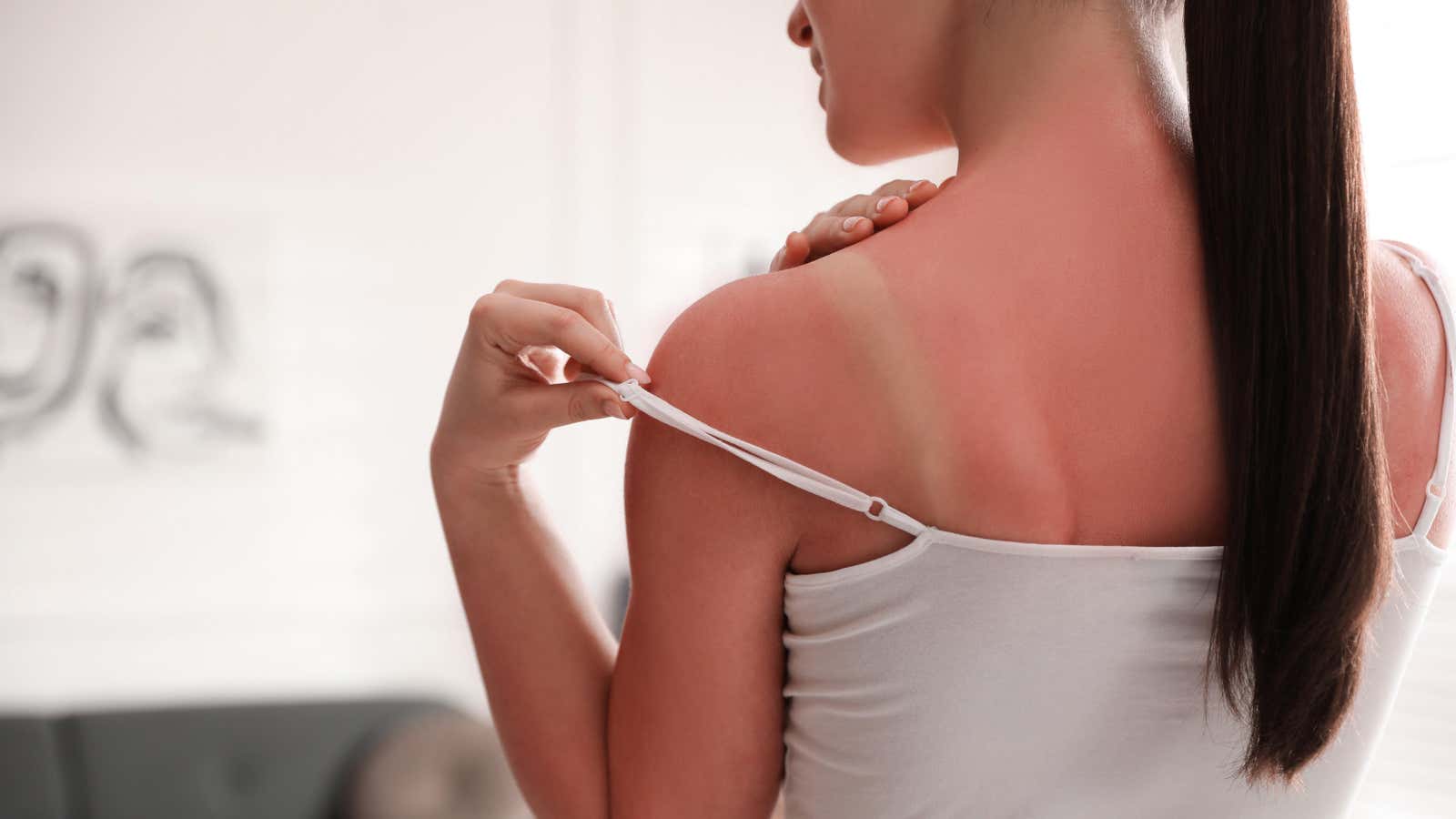How to Know If Your Sunburn Really Needs Medical Attention

Sunburns can be serious, but in most cases we know how to treat them at home : use cool compresses, take some aloe gel and drink plenty of water. However, there are times when a sunburn may require medical attention, even if it seems like one of those things that would make you never consider going to the doctor. Here’s how to determine if your sunburn requires an examination by a healthcare professional.
You have flu-like symptoms
According to the Mayo Clinic , if your sunburn is accompanied by a high fever, headache, severe pain, dehydration, confusion, nausea, or chills, you should see your doctor. According to Healthline , these are “sun poisoning” symptoms that are real and can be quite severe.
Healthline also indicates that you may be at an increased risk of sun poisoning for a variety of reasons: you may have fair skin, you may be taking antibiotics, you may be taking oral contraceptives, you may be using certain herbal supplements (such as St. John’s wort), you may have used citrus oil. on the skin before sun exposure or live at the equator or in the mountains. If you’ve just moved to a new area or didn’t know that your oral medications or a recent chemical peel could increase your risk, you could get sun poisoning without even realizing it was a possibility.
You have to be careful about dehydration here. Try to drink as much water as possible and consult your doctor.
Sunburn blisters and huge
Dermatologist Dr. Maral Skelsey told Lifehacker that a burn is considered severe if it has “extensive blisters over 10% of body surface area.”
She summarized it this way: “Whenever there is fever, palpitations, signs of dehydration such as reduced urine output or poor capillary refill, and more than 10% of body surface area is affected, seek medical attention.”
The Mayo Clinic also says you should also see a doctor if your sunburn is “severe,” blistering, and covering most of your body. Let’s talk about what “serious” means and why it’s important to determine if your sunburn is serious.
According to Johns Hopkins , “Severe sunburn can lead to dehydration and even shock. It is characterized by fainting, low blood pressure and profound weakness. In this case, immediate medical attention is needed.”
Johns Hopkins also notes that pain usually peaks 6 to 48 hours after the burn, so be on the lookout for pain that lasts longer than that.
You have signs of a skin infection
If you see swelling, pus, or red streaks leading from the blisters, you may have a skin infection and should see a doctor right away, according to the Mayo Clinic. You may be prescribed a course of antibiotics. If there is no infection, you may still be recommended a corticosteroid cream or a short course of prednisone.
Skelsey said that in addition to possibly prescribing steroids or antibiotics and painkillers, doctors may even suggest special wound dressings and daily wound care.
The key here is knowing when a sunburn has gone from a painful nuisance to a major concern. Of course, apply sunscreen and protective layers every time you are in the sun to avoid this problem beforehand.